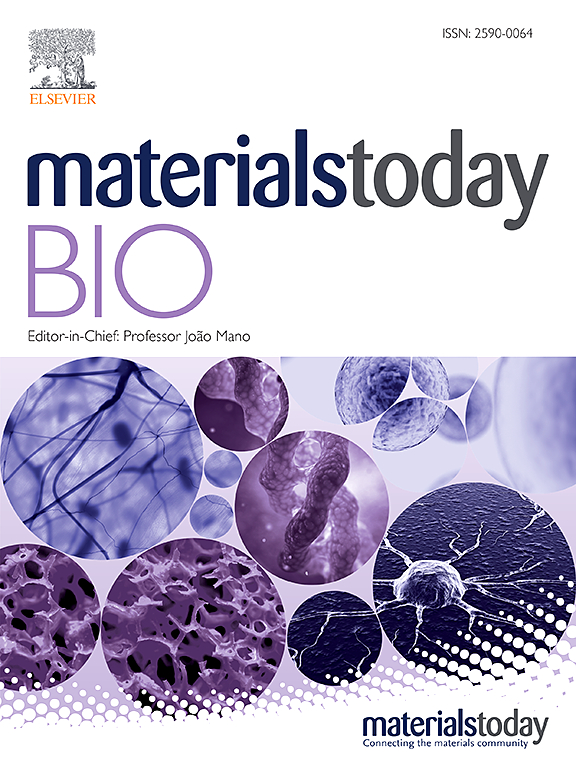Cell-derived biomimetic drug delivery system for inflammatory bowel disease therapy
IF 8.7
1区 医学
Q1 ENGINEERING, BIOMEDICAL
引用次数: 0
Abstract
Inflammatory bowel disease (IBD) is a chronic recurrent disease with an increasing incidence year by year. At present, no safe and effective treatment for IBD exists. Thus, there is an urgent need to create new therapeutic options that have decreased adverse effects and positive clinical efficacy. A range of nanomaterials have fueled the advancement of nanomedicine in recent years, which is establishing more appealing and prospective treatment approaches for IBD. However, traditional synthetic nanomaterials still have some problems in the IBD drug delivery process, such as weak targeting ability of vectors, difficulty escaping immune surveillance, and poor biosecurity. Natural sources of biological nanomaterials have been identified to solve the above problems. A drug delivery system based on bionic technology is expected to achieve a new breakthrough in the targeted therapy of IBD by nanotechnology due to its organic integration of low immunogenicity and natural targeting of biological materials and the controllability and versatility of synthetic nanocarrier design. We begin this review by outlining the fundamental traits of both inflammatory and healthy intestinal microenvironments. Subsequently, we review the latest application of a cell-derived bionic drug delivery system in IBD therapy. Finally, we discuss the development prospects of this delivery system and challenges to its clinical translation. Biomimetic nanotherapy is believed to offer a new strategy for the treatment of IBD.

用于炎症性肠病治疗的细胞衍生生物仿生给药系统
炎症性肠病(IBD)是一种慢性复发性疾病,发病率逐年上升。目前,尚无安全有效的 IBD 治疗方法。因此,迫切需要创造出不良反应小、临床疗效好的新疗法。近年来,一系列纳米材料推动了纳米医学的发展,为 IBD 的治疗提供了更具吸引力和前景的方法。然而,传统合成纳米材料在 IBD 给药过程中仍存在一些问题,如载体靶向能力弱、难以逃脱免疫监视、生物安全性差等。为解决上述问题,人们找到了生物纳米材料的天然来源。基于仿生技术的给药系统将生物材料的低免疫原性和天然靶向性与人工合成纳米载体设计的可控性和多功能性有机结合,有望在纳米技术靶向治疗 IBD 方面实现新的突破。本综述首先概述了炎症和健康肠道微环境的基本特征。随后,我们回顾了细胞衍生仿生给药系统在 IBD 治疗中的最新应用。最后,我们讨论了这种给药系统的发展前景及其临床转化所面临的挑战。仿生纳米疗法被认为是治疗 IBD 的新策略。
本文章由计算机程序翻译,如有差异,请以英文原文为准。
求助全文
约1分钟内获得全文
求助全文
来源期刊

Materials Today Bio
Multiple-
CiteScore
8.30
自引率
4.90%
发文量
303
审稿时长
30 days
期刊介绍:
Materials Today Bio is a multidisciplinary journal that specializes in the intersection between biology and materials science, chemistry, physics, engineering, and medicine. It covers various aspects such as the design and assembly of new structures, their interaction with biological systems, functionalization, bioimaging, therapies, and diagnostics in healthcare. The journal aims to showcase the most significant advancements and discoveries in this field. As part of the Materials Today family, Materials Today Bio provides rigorous peer review, quick decision-making, and high visibility for authors. It is indexed in Scopus, PubMed Central, Emerging Sources, Citation Index (ESCI), and Directory of Open Access Journals (DOAJ).
 求助内容:
求助内容: 应助结果提醒方式:
应助结果提醒方式:


